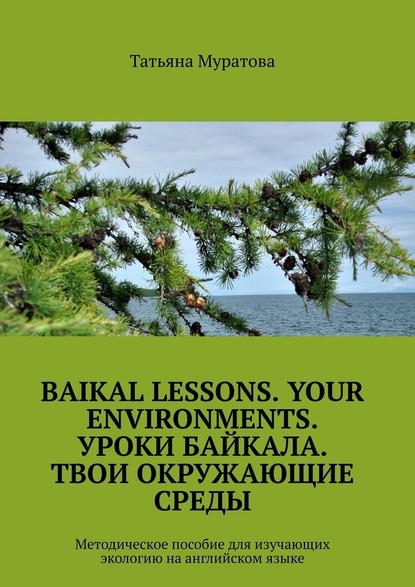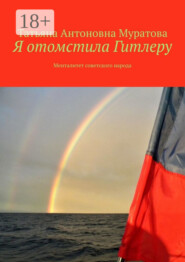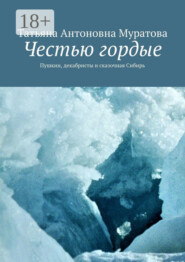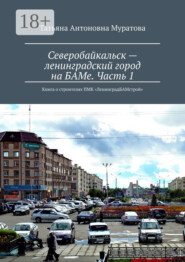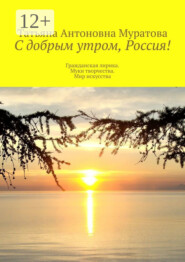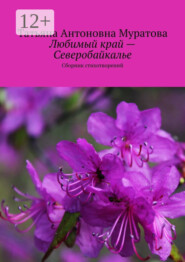По всем вопросам обращайтесь на: info@litportal.ru
(©) 2003-2025.
✖
Baikal lessons. Your environments. Уроки Байкала. Твои окружающие среды. Методическое пособие для изучающих экологию на английском языке
Настройки чтения
Размер шрифта
Высота строк
Поля
The poisoning of the world’s land, air, and water is the fastest-spreading disease of civilisation. It probably produces fewer headlines than wars, earthquakes and floods, but it is potentially one of history’s dangers to human life on earth. If present trends continue for the next several decades, our planet will become uninhabitable.
Overpopulation, pollution and energy consumption have created such planet-wide problems as massive deforestation, ozone depletion, acid rains and the global warming that is believed to be caused by the greenhouse effect. The seas are in danger. They are filled with poison: industrial and nuclear waste, chemical fertilisers and pesticides. The Mediterranean is already nearly dead; the North Sea is following. The Aral Sea is on the brink of extinction. If nothing is done about it, one day nothing will be able to live in the seas. Every ten minutes one kind of animal, plant or insect dies out for ever. If nothing is done about it, one million species that are alive today will have become extinct twenty years from now. Air pollution is a very serious problem. In Cairo just breathing the air is life threatening-equivalent to smoking two packs of cigarettes a day. The same holds true for Mexico City and 600 cities of the former Soviet Union.
Industrial enterprises emit tons of harmful substances. These emissions have disastrous consequences for our planet. They are the main reason for the greenhouse effect and acid rains. An even greater environmental threat are nuclear power stations. We all know how tragic the consequences of the Chernobyl disaster are. People are beginning to realise that environmental problems are somebody else’s. They join and support various international organisations and green parties. If governments wake up to what is happening-perhaps we’ll be able to avoid the disaster that threatens the natural world and all of us with it.
Questions:
1.What is the fastest-spreading disease of civilisation?
2.What planet-wide problems have overpopulation, pollution and energy consumption created?
3.What will happen to our planet if present trends continue?
4.What is happening to the seas and rivers?
5.The Aral Sea is on the brink of extinction. Do you think it’s possible to save it?
6. A lot of animals are dying out. But people wear fur coats, crocodile handbags, leather shoes, etc. Are you for or against hunting?
7.Is air pollution a serious problem? Why?
8.What were the tragic consequences of the Chernobyl disaster?
9.Are nuclear power stations dangerous?
10.What is the main cause of the greenhouse effect and acid rains?
11.What do people of different countries do to save our planet?
12.Have you heard of Greenpeace?
The greenhouse effect
A greenhouse?
A greenhouse is a building made of glass, where you can grow flowers and other plants that need a lot of warmth.
How it works
The sun shines in through the glass and warms the greenhouse, and the roof and walls keep the heat from getting out.
Our greenhouse
The Earth is surrounded by a blanket of invisible gases (with names like carbon dioxide) that act just like a greenhouse/ The sun shines in, and the blanket of gases traps the heat like a roof, keeping it close to the planet. That’s good – we can’t live without warmth.
What’s going on
Factories, electric power plants, and cars are making a lot of new gases. Even trees, when they are cut down, give off the gases! These new gases are trapping more and more of the sun’s heat. This is called the greenhouse effect, or global warming.
What can happen
If the earth’s temperature gets hotter by just a few degrees, it could change the weather all over the planet in big ways. Places that are warm would become too hot to live in, and places that are cold would become warm. The places that grow most of our food could get to hot to grow crops anymore.
Even every kid can help stop the greenhouse effect by using less energy, protecting and planting trees, and by recycling so factories don’t need to work as hard making things. This book is full of tips on how to do it!
The ozone hole
The ozone layer
Up in the sky, above the air we breathe, there’s a layer of gas called ozone. It helps us by blocking out rays from the sun that can harm our skin, and by letting the rays that are good for us come through. We’re lucky to have the ozone to protect us!
What’s happening
Now the ozone layer is being damaged by gases that people have made. The gases are called CFCs, and halons. They are used in refrigerators, fire extinguishers, air conditioners, plastic foam, and some other things.
How it happens
The CPCs float up to the top of the atmosphere/ where the layer of ozone is, and «eat up» the ozone just like little Pac-Men.
Our mission
Scientists are very concerned about the ozone layer, because a lot of it has gone away in just a few years. So it’s very important that we learn to do something about it.
We can all help to stop the ozone layer from disappearing! For more ideas on how to do that, keep reading!
2. ACID RAINS
Every year more and more plants and animals disappear never to be seen again. Strangely, it is the most thoughtless animal that is causing most of problems – man. Nature is very carefully balanced and if this balance is disturbed, animals can disappear alarmingly fast. Every day, thousands of species of animals draw closer to extinction. There are countless number of species which may become extinct before they are even discovered.
In many lakes the fish are dying. Fishermen are worried because every year there are fewer fish and some lakes have no fish at all. Scientists are beginning to get worried too. What is killing the fish? The problem is acid rain. Acid rain is a kind of air pollution. It is caused by factories that burn coal or oil or gas. These factories send smoke high into the air. The wind often carries the smoke far from the factories. Some of the harmful substances in the smoke may come down with the rain hundreds of miles away. The rain in many places isn’t natural and clean any more. It’s full of acid chemicals. When it falls in lakes, it changes them too. The lakes become more acidic. Acid water is like vinegar or lemon juice. It hurts when it gets in your eyes. It also kills the plants and animals that usually live in lake water. That is why the fish are dying in lakes. But dead fish may be just the beginning of the problem. Scientists are finding other effects of acid rain. In some large areas trees are dying. Not just one tree here and there, but whole forests. At first scientists couldn’t understand why. There were no bugs or disease in this trees. The weather was not dry. But now they think that the rain was the cause. Acid rain is making the earth more acidic in these areas. Some kinds of trees cannot live in the soil that is very acidic. Now scientists are also beginning to study the effects of acid rain on larger animals. For example, they believe that some deer in Poland are less healthy because of acid rain. If deer are hurt by the rain, what about people? This is the question many people are beginning to ask. No one knows the answer yet. But it is an important question for us all.
Acid – A corrosive solution with a pH less than7. Vinegar is a common weak acid; battery acid is much stronger.
Acid Rain – You first need to understand Acid Deposition: a complex chemical and atmospheric phenomenon that occurs when emissions of sulphur and nitrogen compounds and other substances are transformed by chemical processes in the atmosphere, often far from the original sources, and then deposited on earth in either wet or dry form. The wet forms (precipitation) are popularly called «acid rain» and fall as rain, snow, or fog. The dry forms are acidic gases or particulates.
Questions:
1.This passage is about
(A) fishing
(B) acid rain
(C) air pollution
(D) destructive human activity
2.Every year thousands of species of animals
Overpopulation, pollution and energy consumption have created such planet-wide problems as massive deforestation, ozone depletion, acid rains and the global warming that is believed to be caused by the greenhouse effect. The seas are in danger. They are filled with poison: industrial and nuclear waste, chemical fertilisers and pesticides. The Mediterranean is already nearly dead; the North Sea is following. The Aral Sea is on the brink of extinction. If nothing is done about it, one day nothing will be able to live in the seas. Every ten minutes one kind of animal, plant or insect dies out for ever. If nothing is done about it, one million species that are alive today will have become extinct twenty years from now. Air pollution is a very serious problem. In Cairo just breathing the air is life threatening-equivalent to smoking two packs of cigarettes a day. The same holds true for Mexico City and 600 cities of the former Soviet Union.
Industrial enterprises emit tons of harmful substances. These emissions have disastrous consequences for our planet. They are the main reason for the greenhouse effect and acid rains. An even greater environmental threat are nuclear power stations. We all know how tragic the consequences of the Chernobyl disaster are. People are beginning to realise that environmental problems are somebody else’s. They join and support various international organisations and green parties. If governments wake up to what is happening-perhaps we’ll be able to avoid the disaster that threatens the natural world and all of us with it.
Questions:
1.What is the fastest-spreading disease of civilisation?
2.What planet-wide problems have overpopulation, pollution and energy consumption created?
3.What will happen to our planet if present trends continue?
4.What is happening to the seas and rivers?
5.The Aral Sea is on the brink of extinction. Do you think it’s possible to save it?
6. A lot of animals are dying out. But people wear fur coats, crocodile handbags, leather shoes, etc. Are you for or against hunting?
7.Is air pollution a serious problem? Why?
8.What were the tragic consequences of the Chernobyl disaster?
9.Are nuclear power stations dangerous?
10.What is the main cause of the greenhouse effect and acid rains?
11.What do people of different countries do to save our planet?
12.Have you heard of Greenpeace?
The greenhouse effect
A greenhouse?
A greenhouse is a building made of glass, where you can grow flowers and other plants that need a lot of warmth.
How it works
The sun shines in through the glass and warms the greenhouse, and the roof and walls keep the heat from getting out.
Our greenhouse
The Earth is surrounded by a blanket of invisible gases (with names like carbon dioxide) that act just like a greenhouse/ The sun shines in, and the blanket of gases traps the heat like a roof, keeping it close to the planet. That’s good – we can’t live without warmth.
What’s going on
Factories, electric power plants, and cars are making a lot of new gases. Even trees, when they are cut down, give off the gases! These new gases are trapping more and more of the sun’s heat. This is called the greenhouse effect, or global warming.
What can happen
If the earth’s temperature gets hotter by just a few degrees, it could change the weather all over the planet in big ways. Places that are warm would become too hot to live in, and places that are cold would become warm. The places that grow most of our food could get to hot to grow crops anymore.
Even every kid can help stop the greenhouse effect by using less energy, protecting and planting trees, and by recycling so factories don’t need to work as hard making things. This book is full of tips on how to do it!
The ozone hole
The ozone layer
Up in the sky, above the air we breathe, there’s a layer of gas called ozone. It helps us by blocking out rays from the sun that can harm our skin, and by letting the rays that are good for us come through. We’re lucky to have the ozone to protect us!
What’s happening
Now the ozone layer is being damaged by gases that people have made. The gases are called CFCs, and halons. They are used in refrigerators, fire extinguishers, air conditioners, plastic foam, and some other things.
How it happens
The CPCs float up to the top of the atmosphere/ where the layer of ozone is, and «eat up» the ozone just like little Pac-Men.
Our mission
Scientists are very concerned about the ozone layer, because a lot of it has gone away in just a few years. So it’s very important that we learn to do something about it.
We can all help to stop the ozone layer from disappearing! For more ideas on how to do that, keep reading!
2. ACID RAINS
Every year more and more plants and animals disappear never to be seen again. Strangely, it is the most thoughtless animal that is causing most of problems – man. Nature is very carefully balanced and if this balance is disturbed, animals can disappear alarmingly fast. Every day, thousands of species of animals draw closer to extinction. There are countless number of species which may become extinct before they are even discovered.
In many lakes the fish are dying. Fishermen are worried because every year there are fewer fish and some lakes have no fish at all. Scientists are beginning to get worried too. What is killing the fish? The problem is acid rain. Acid rain is a kind of air pollution. It is caused by factories that burn coal or oil or gas. These factories send smoke high into the air. The wind often carries the smoke far from the factories. Some of the harmful substances in the smoke may come down with the rain hundreds of miles away. The rain in many places isn’t natural and clean any more. It’s full of acid chemicals. When it falls in lakes, it changes them too. The lakes become more acidic. Acid water is like vinegar or lemon juice. It hurts when it gets in your eyes. It also kills the plants and animals that usually live in lake water. That is why the fish are dying in lakes. But dead fish may be just the beginning of the problem. Scientists are finding other effects of acid rain. In some large areas trees are dying. Not just one tree here and there, but whole forests. At first scientists couldn’t understand why. There were no bugs or disease in this trees. The weather was not dry. But now they think that the rain was the cause. Acid rain is making the earth more acidic in these areas. Some kinds of trees cannot live in the soil that is very acidic. Now scientists are also beginning to study the effects of acid rain on larger animals. For example, they believe that some deer in Poland are less healthy because of acid rain. If deer are hurt by the rain, what about people? This is the question many people are beginning to ask. No one knows the answer yet. But it is an important question for us all.
Acid – A corrosive solution with a pH less than7. Vinegar is a common weak acid; battery acid is much stronger.
Acid Rain – You first need to understand Acid Deposition: a complex chemical and atmospheric phenomenon that occurs when emissions of sulphur and nitrogen compounds and other substances are transformed by chemical processes in the atmosphere, often far from the original sources, and then deposited on earth in either wet or dry form. The wet forms (precipitation) are popularly called «acid rain» and fall as rain, snow, or fog. The dry forms are acidic gases or particulates.
Questions:
1.This passage is about
(A) fishing
(B) acid rain
(C) air pollution
(D) destructive human activity
2.Every year thousands of species of animals





